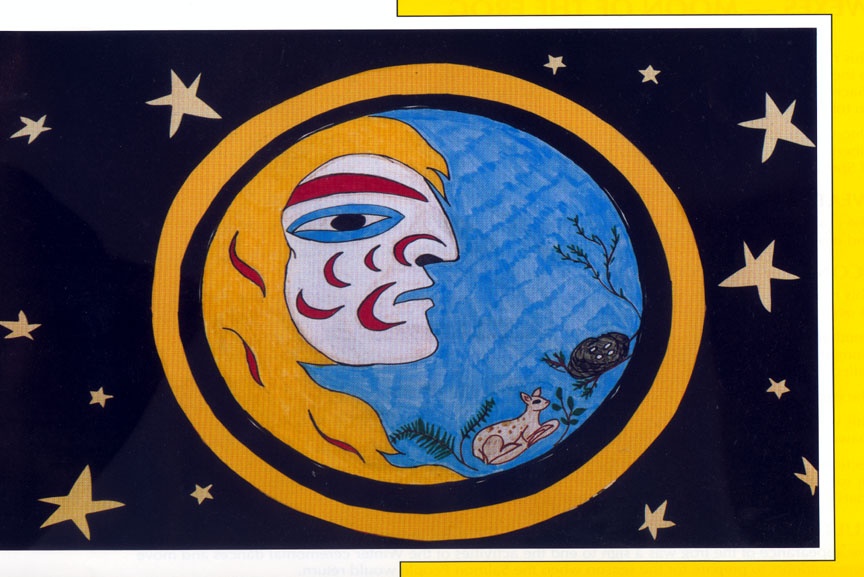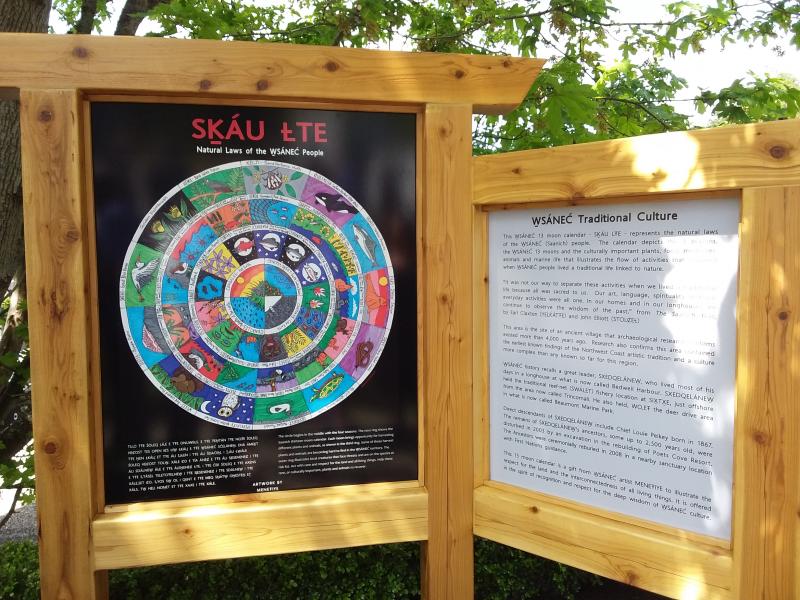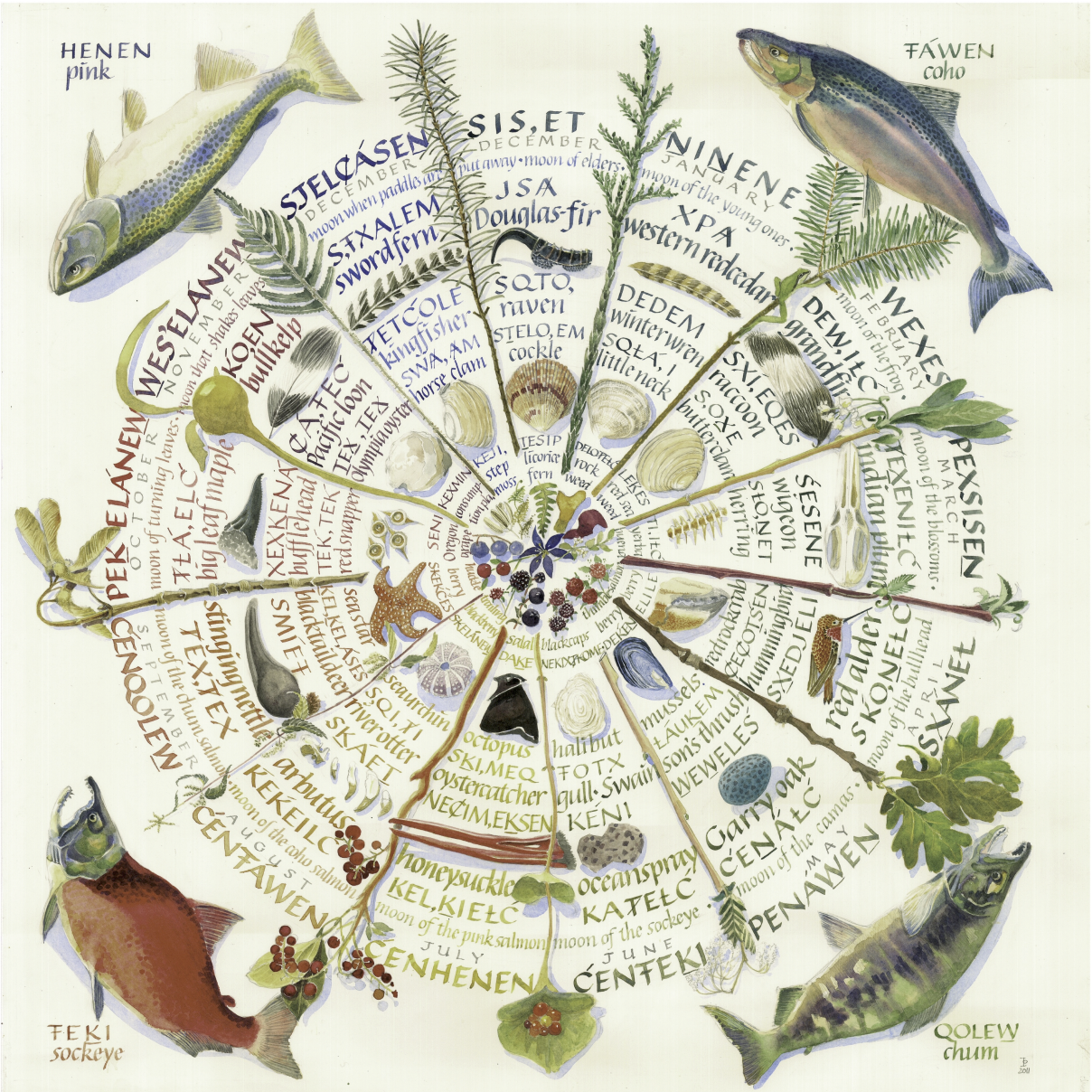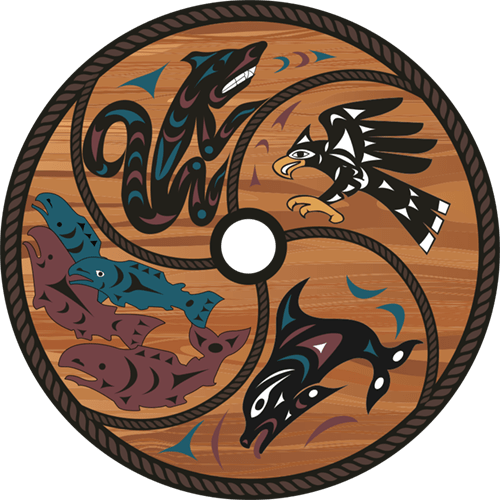In our world, this is the true beginning of the Saanich Year. The new moon signifies a change–our days are growing longer. Nature, the moons, and the whole world are being reborn.
ṈIṈENE – MOON OF THE CHILD
The face of the young man represents youth, a new beginning, the rebirth of the animal world, and the new edible shoots. This is the Saanich New Year. The moon’s yellow hair is the returning light to the world.
WEATHER
This is the time the Earth starts to move closer to the Sun once again. All things begin to warm up; everything in nature is being reborn. Although the cold, winds, and winter rains, are still with us there are some good days and this is the first sign that a new year has begun.
ECONOMIC ACTIVITIES
Some of the twine that had been made from nettles was now woven for reef net fishing. Each family group had a responsibility to produce a certain amount of net or the fishery and these parts would later be assembled. Because there was no hunting or fishing going on, people relied mainly on the fish and game that had been stored for the Winter. For those who would risk the rough seas, there was halibut fishing as the fish returned to their spawning grounds. This was also the season when fawns were born, so the new moon signaled the time to stop deer hunting.
CULTURAL ACTIVITIES
The instruction of the children through the telling of tales helped to pass the long Winter nights. The longhouse ceremonial dances continued.
This illustration of the W̱SÁNEĆ calendar, SḴÁU ȽTE, by artist MENEŦIYE is located on S,DÁYES (South Pender Island). The illustration depicts the four seasons, the 13 moons and the culturally important plants, food, medicines, animals and marine life.
Based on the sacred interconnectedness of all things, the observation of the 13 moons is part of W̱SÁNEĆ natural law. Each of the 13 moons provides guidance as to what cultural and economic activities are best suited for the time of year, as well as what weather to expect and what food is most abundant.
Artist Briony Penn, copyright Tsawout First Nation.
“It was not our way to separate these activities when we lived a traditional life because all was sacred to us. Our art, language, spirituality and our everyday activities were all one. In our homes and in our longhouses we continue to observe the wisdom of the past.”
~The Saanich Year, by Earl Claxton (YELḰÁTŦE) and John Elliott (STOLȻEȽ).
The 13 moons don’t line up exactly with the Gregorian 12-month calendar, but loose associations between months and the moons can be made, as shown above.










